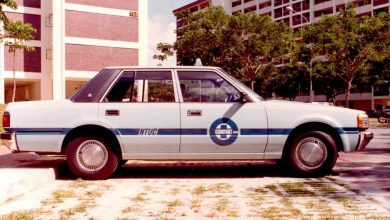Barcelona’s ‘Superblocks’: Viable for Singapore?
Singapore is not the only city gearing towards a car-lite, pollution and congestion free city. In Barcelona, the “grid city” has been suffering from clogged roads and choked air quality, with urban traffic contributing to a whopping 3,500 premature deaths caused by air pollution each year. Hence, in 2014, the Barcelona City Council, in collaboration with the Urban Ecology Agency, developed an Urban Mobility Plan, designed to increase walkability to give the city back to people and reduce pollution.
What is the Barcelona ‘Superblocks’?
A Superblock, or Superilles, will close off traffic within a square of nine city blocks, with main traffic only allowed around the perimeter. Car, scooter, lorry and bus traffic will only be allowed in the streets in between if they are residents or providing local businesses, and at a greatly reduced speed of 10km/h. The spaces will be repurposed to “fill [their] city with life”, as its tagline says.

This plan will kick off in the famous gridded neighbourhood of Eixample. The revolutionary grid design, engineered by Ildefons Cerdà in the late 19th century, was created with the intention to make Barcelona healthier by designing the area such that the population would be spread out equally, as well as by providing green spaces within each block.
The entire process is being conducted in nine areas at a different pace, through a gradual trial and error method dubbed “tactical urbanism”, with initial measures such as changing road signs. A further 120 locations have been identified as potentially suitable, and will commence implementation after initial testings.
What are its expected effects on the city?
The Superblocks are designed with 6 main objectives: More sustainable mobility, revitalising public spaces, fostering biodiversity and urban vegetation, fostering the city’s social fabric and promoting cohesion, promoting self-sufficiency in the use of resources, and integrating governance processes.
A study conducted by the local Environmental Epidemiology Agency determined that 1,200 deaths could be prevented in the city yearly just by reaching EU-mandated levels for nitrogen dioxide levels (equivalent to a five-month rise in life expectancy). Add to that approximately 33,000 fewer cardiovascular-related hospitalisations, and the problem becomes apparent for the city with a mere population of 1.6 million. Traffic is also the first cause for noise pollution in the city; 61% of its residents live with noise levels higher than those deemed healthy by legislation.
The council also cites road accidents, sedentary lifestyles (20% of adolescents in Barcelona are overweight or at risk of becoming overweight), and the lack of green spaces as reasons behind the Superblocks plan.
Can Singapore follow in its footsteps?
Cars have reshaped major cities around the world, largely at the cost of everyone outside of a private vehicle. Especially where owning a vehicle can be prohibitively expensive, the Singapore government should take extra precautionary measures to ensure that commuters do not lose out in the urbanisation process to pave roads for drivers.
Which begs the question: Is a Singapore ‘Superblock’ a viable move for the nation to move towards a car-lite city? Perhaps the idea is a little far-fetched for our tiny nation, and would be more suitable for larger cities with an existing grid layout such as New York. However, Singapore has in fact already taken measures to convert roads into pedestrian zones, starting from Car-Free Sundays which was pioneered earlier this year.
Although converting and making adjustments to our existing landscapes will mean exhausting more of our resources (to put things in perspective, the Barcelona Superblocks is estimated to cost an approximate €10m), and drivers may not be receptive to detours and inconveniences arising from it (given that they are already paying such a hefty sum to drive), it is evident that more countries are coming up with more initiatives to find alternatives to driving to reduce its carbon footprint.
What are your opinions on this scheme? Has Singapore done enough with its existing measures to curb driving? Or has the country already overdone it since the implementation of COE prices? Share your opinions with us below!
Source: The Guardian




